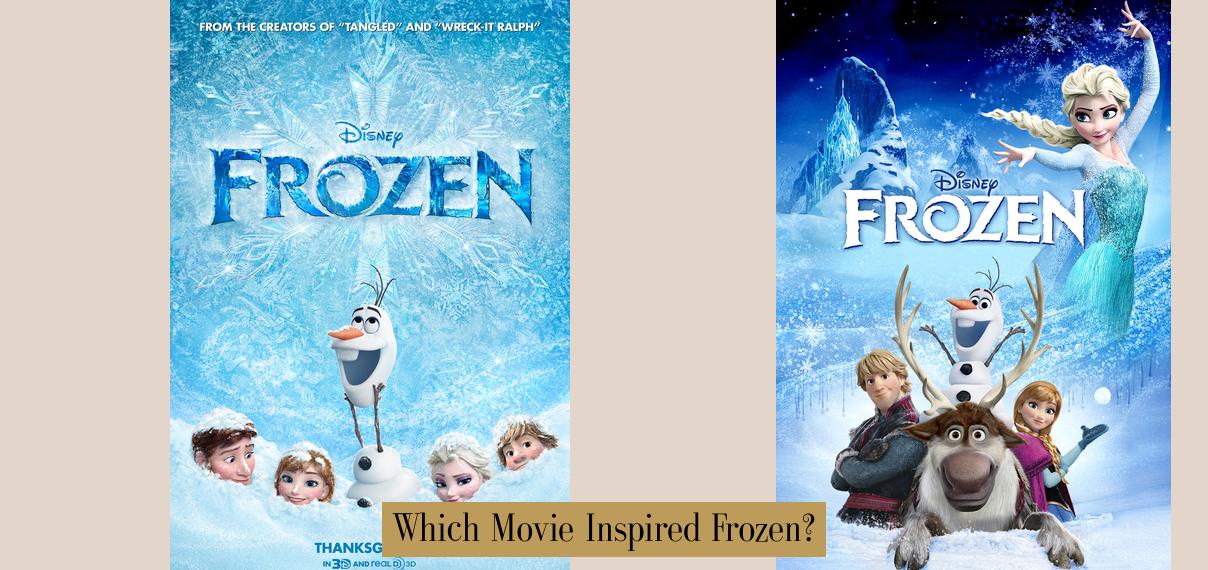Which Movie Inspired Frozen? (Spoiler Alert: It’s Not What You Think!)
Okay, let’s get real for a second. You’re probably picturing Elsa unleashing her icy powers, belting out “Let It Go,” and wondering, “Did Disney just steal this from some other movie?” You’re not alone. Many people think Frozen borrowed heavily from other films, but the truth is a little more nuanced.
While it’s true that Frozen draws inspiration from the classic fairy tale “The Snow Queen” by Hans Christian Andersen, the movie itself is not a direct adaptation. It’s more like a distant cousin who shares a few family traits but has a completely different personality.
Think of it this way: “The Snow Queen” is the grumpy, old, and slightly terrifying great-aunt you only see at Christmas. She’s got a frozen heart, a penchant for ice magic, and a tendency to kidnap children. Frozen, on the other hand, is the bubbly, slightly awkward, and ultimately lovable younger cousin who’s just trying to figure out her place in the world. She’s got a frozen heart, a penchant for ice magic, and a tendency to accidentally unleash a blizzard on her kingdom.
So, while Frozen definitely takes a cue from the original fairy tale, it’s far from a carbon copy. The movie puts its own spin on the story, exploring themes of sisterhood, self-acceptance, and the power of letting go (of both literal and metaphorical ice).
But wait, there’s more!
Beyond the Snow Queen: A Tapestry of Inspiration
Frozen isn’t just a one-trick pony. It draws inspiration from a diverse range of sources, creating a rich and unique tapestry of influences. Let’s dive into the details:
1. The Scandinavian Landscape: A Frozen Wonderland
The movie’s breathtaking visuals were heavily inspired by the rugged beauty of Scandinavia. From the majestic fjords of Norway to the snow-capped mountains of Iceland, Frozen’s landscapes are a visual feast for the eyes.
- Nærøyfjord, Norway: This UNESCO World Heritage Site served as the inspiration for the icy waters surrounding Arendelle. It’s a breathtaking fjord with towering cliffs and crystal-clear waters, making it a perfect setting for a story about ice and snow.
- Bergen, Norway: The charming town of Bergen, Norway, with its colorful wooden houses and cobblestone streets, provided the inspiration for the look and feel of Arendelle.
- Hallstatt, Austria: While not explicitly mentioned, the picturesque Austrian village of Hallstatt is rumored to have inspired the architecture and overall aesthetic of Arendelle. With its charming lakefront location and traditional houses, Hallstatt has that fairytale charm that perfectly fits the Frozen vibe.
2. The Sami Culture: A Touch of Indigenous Wisdom
Frozen also incorporates elements of the Sami culture, the indigenous people of northern Europe.
- Reindeer Herding: The movie’s use of reindeer, particularly their role in pulling sleighs and providing transportation, is a direct nod to the Sami culture’s traditional way of life.
- The Northern Lights: The ethereal beauty of the Aurora Borealis, a natural phenomenon often seen in the northern skies, is beautifully depicted in Frozen, adding a touch of magical wonder to the film.
3. The Scandinavian Mythology: A Blend of Magic and Folklore
Frozen also incorporates elements of Scandinavian mythology, adding a layer of depth and intrigue to the story.
- The Norse Gods: The movie features a number of references to Norse mythology, including the god Odin and the Valkyries, suggesting that magic and ancient lore are deeply intertwined with the world of Frozen.
- The Troll King: The troll king in Frozen, with his magical powers and ability to heal, echoes the ancient Scandinavian belief in trolls as protectors of the forest and guardians of nature.
4. The Disney Legacy: A Legacy of Storytelling
Frozen isn’t just a standalone film; it’s part of a rich Disney legacy. It draws inspiration from classic Disney films like “Snow White and the Seven Dwarfs,” “The Little Mermaid,” and “Beauty and the Beast.”
- The “Good vs. Evil” Narrative: Frozen follows the classic Disney formula of a battle between good and evil, with Elsa representing the power of darkness and Anna representing the force of light.
- The Power of Love: Frozen, like many other Disney films, emphasizes the power of love to overcome adversity. Anna’s love for Elsa ultimately saves her sister from the clutches of darkness.
5. The Power of Music:
No discussion of Frozen would be complete without mentioning the movie’s incredible soundtrack. From the anthemic “Let It Go” to the heartwarming “Do You Want to Build a Snowman?,” Frozen’s music has captured the hearts of audiences worldwide.
- The Influence of Broadway: Frozen’s music director, Christophe Beck, has a background in Broadway, and his work on the film reflects his experience in creating catchy and memorable melodies.
- The Power of Emotion: Frozen’s music is deeply emotional, perfectly capturing the characters’ feelings and the story’s themes. It’s a soundtrack that stays with you long after the credits roll.
In Conclusion: A Tapestry of Inspiration
Frozen is a masterpiece of storytelling that weaves together a tapestry of inspiration from various sources. It’s a testament to the power of drawing from diverse cultural traditions, historical events, and artistic expressions. So, while “The Snow Queen” might be the most obvious inspiration, remember that Frozen is a unique creation, a story that stands on its own, captivating audiences with its dazzling visuals, heartfelt characters, and unforgettable music.
